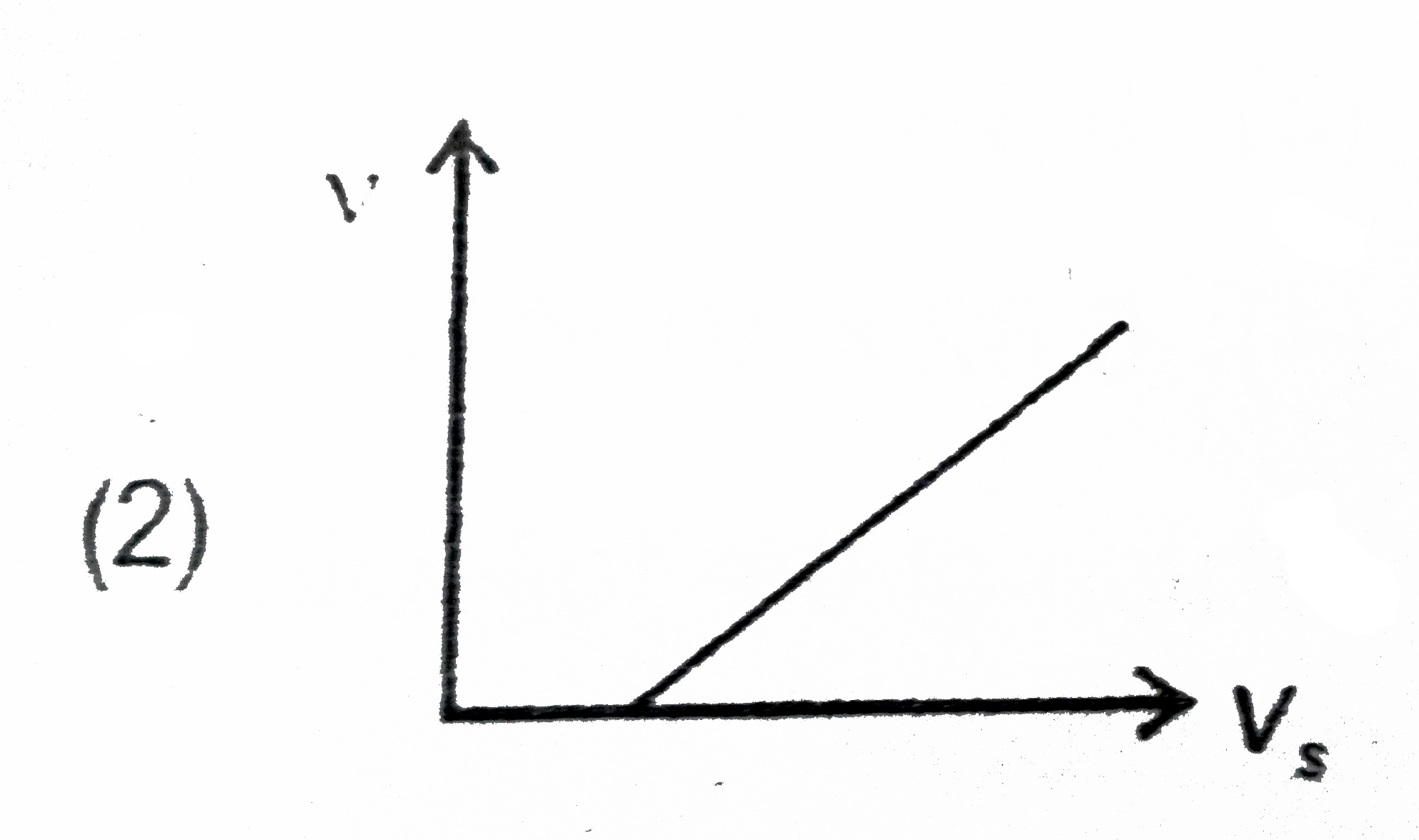What is the effect of decrease in frequency of incident radiation on the stopping potential in photoelectric emission?
The value of stopping potential in photo electirc emission from a metal surface decreases with the decrease in frequency of incident radiation, provided the frequency of radiation is greater than threshold frequency. When frequency of incident radiation becomes equal to threshold frequency, stopping potential becomes zero.
Topper's Solved these Questions
- DUAL NATURE OF RADIATION AND MATTERBOOK - PRADEEPCHAPTER - DUAL NATURE OF RADIATION AND MATTEREXERCISE - NCERT Exerciese question
1 Videos
- DUAL NATURE OF RADIATION AND MATTERBOOK - PRADEEPCHAPTER - DUAL NATURE OF RADIATION AND MATTEREXERCISE - Short answer
1 Videos
- CURRENT ELECTRICITYBOOK - PRADEEPCHAPTER - CURRENT ELECTRICITYEXERCISE - Problems for Practice (B)
2 Videos
- ELECTROMAGNETIC INDUCTION & ALTERNATING CURRENTBOOK - PRADEEPCHAPTER - ELECTROMAGNETIC INDUCTION & ALTERNATING CURRENTEXERCISE - Multiple Choice Questions
1 Videos
Similar Questions
What, if any, is the effect of the (i) intensity (ii) frequency of incident radiation on the stopping potential in photoelectric emission?
View SolutionSketch a graph between frequency of incident radiations and stopping potential for a given photosenstive material. What information can be obtained from the value of the intercept on the potential axis? A source of light of frequency greater than the threshold frequency is placed at a distance of 1m from the cathode of a photocell. The stopping potential is found to be V. If the distance of the light source from the cathode is reduced, explain giving reasons, what change will you observe in the (i) photoelectric current (i) stopping potential?
View Solution
Knowledge Check
Graph of incident freuency with stopping potential in photoelectric effect is
A B
B C
C D
D
The photoelectric work function of the emitter of a photocell is 3.63 eV . The frequency of incident light radiation if the stopping potential of the emitter is 3 volt , is
A1.1×1015 HzB6.6×1015 HzC1.6×1015 HzD6.1×1015 HzThe magnitude of stopping potential for the photoelectric effect is
Adirectly proportional to the intensity of incident light.Binversely proportional to the intensity of incident light.Cdirectly proportional to the frequency of incident light.Dinversely proportional to the frequency of incident light.
The graph between frequency of incident radiations and stopping potential for a given photosensitive material as follows.

What information can be obtained from the value of the intercept on the potential axis ?
View SolutionDefine the term 'stopping potential' in relation to photoelectric effect.
View SolutionDefine the term 'stopping potential' in relation to photoelectric effect.
View SolutionWhat is the effect of the intensity of incident radiation on the photoelectric current, for a given emitter material and p.d across the photoelectric cell ?
View SolutionExplain giving reasons for the following:
(a) Photoelectric current in a photocell increases with the increase in the intensity of the incident radiation.
(b) The stopping potential (V0) varies linearly with the frequency (v) of the incident radiation for a given photosensitive surface with the slope remaining the same for different surfaces.
(c) Maximum kinetic energy of the photoelectrons is independent of the intensity of incident radiation.
View Solution
